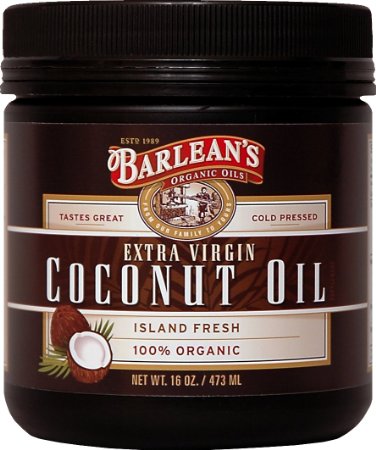19 Jul Purchasing power of Money formula Largest Online Education Community


The information mentioned herein above is only for consumption by the client and such material should not be redistributed. In simple language, if you buy a similar commodity using one of the two available currencies, the expense incurred should be the same in both currencies if the exchange rate is considered. Sri Lanka’s purchasing power parity in 2021 was 53.7 LCU for every US$. Sri Lanka’s purchasing power parity increased from 20.9 LCU to 1 USD in 2002 to 53.7 LCU to 1 USD in 2021, expanding at an average yearly rate of 5.14%. Indonesia’s purchasing power parity in 2021 was 4,758.7 LCU per foreign currency. Indonesia’s purchasing power parity climbed from 1,616.1 LCU to 1 USD in 2002 to 4,758.7 LCU to 1 USD in 2021, expanding at an average yearly rate of 5.94%.
The market and PPP rates, on the other hand, tend to be closer in industrialised nations. The underlying PPP idea is absolute purchasing power parity , which argues that once two currencies are exchanged, a basket of commodities should have the same value. The hypothesis is usually based on the conversion of other international currencies into US dollars. Every investor makes his savings and investments with the sole intent of growing their money with time so that they can fulfil and fund their provisions and financial necessities in future. Overall, it is important to consider the impact of inflation when making savings and investment decisions.
With a GDP of $25.35 trillion and a PPP that handled more than 16% of the world’s products and services in 2022, the United States was the world’s largest economy. The Indian economy maintains a third position in the world as far as purchasing power parity is concerned. As per World Bank reference data, India accounts for 6.7%, translated as $8,051 billion, of the world’s $119,547 billion Gross Domestic Product in terms of PPP. Consumer Price Index is the index number which is used to calculate purchasing power of money and real wage.
Purchasing Power Parity by Country
As a result, there is an opportunity for arbitrage where individuals in India can store up bread and export it to the US, where they can sell it for a healthy profit.
How do you calculate the purchasing power of money?
- If the consumer price index for 1994 is 800, then the purchasing power of a rupee is _____.
- Which index number is used to calculate purchasing power of money and real wage?
- Write any two uses of cost of living index number.
This is the most comprehensive index to measure inflation since it factors in every production in an economy, excluding imports. CPI, or consumer price index, estimates the average price of goods and services, including education, foods and beverages, clothing, transportation, recreation and medical care. You can do everything from the Fi App, including p2p payments, fund transfers, bill payments, and more, with features to automate every action.
Personal Consumption Expenditure Price Index
For instance, if the conversion rate is taken into account as being $1 for every ₹80, a smartphone that costs roughly ₹15,000 in India would cost about $187.5 in the USA. GDP or Gross domestic product is the total monetary value of all the finished goods and services produced in a country during a given period. It acts as a scorecard of a country’s economic health by considering its domestic production or output. Q. The purchasing power of money is inversely proportional to the Consumer Price Index. Q. If the consumer price index for 1994 is 800, then the purchasing power of a rupee is _____. As a result, the weights used in global growth calculations make a large impact, but they don’t make a big difference in estimates of aggregate growth in advanced economies.
Individuals can also divide their nominal income by months, weeks and hours and adjust it with the subsequent change in the inflation rate. The meaning of real income is the inflation-adjusted earnings of an individual or a country. It is also known as real wage when denoting an individual’s income.
- PPP is used with GDP to determine the country’s economic health.
- In general, the impact of inflation on wages would influence an individual consumer’s purchasing power.
- Now, even if your investments will grow by 5%, but the commodity price will grow by 10%.
- With an average yearly growth rate of 4.31%, South Africa’s purchasing power parity climbed from 3.2 LCU per international $ in 2002 to 7.2 LCU per international $ in 2021.
- Purchase of important power parity from the viewpoint of the global economy.
It is an indicator used by analysts to compare currencies of different countries. Controlling the money supply can also help in preventing inflation. The money supply is the total value of money in circulation in the country. In India, the Reserve Bank of India controls the money supply.
In order to help the taxpayers and buyers from paying a high amount of taxes, the CII is applied, wherein the price of the assets is increased, leading to a decrease in the profits and taxes. The return for Ms Aadhya will be 5% or more depending on her choice. However, the real rate of return purchasing power of money formula for her will be less than that. This is because inflation reduces the purchasing power and erodes the value of the money. It has to be factored in while investing to know the real rate of return on investment. Inflation has an impact on the prices of goods, services, and commodities, etc.
How Does Inflation Affect Your Savings?
Some years ago an individual could purchase 3 good items for Rs.500, while in the present day, for the same amount one can just purchase 2 good items. This is what exactly inflation is, an increase in the living cost due to a decrease in the purchasing power of money. Inflation and deflation, foreign currency exchange, credit availability, price fluctuations due to interest rates also affect purchasing power. Every periodic year, the World Bank publishes a statement comparing productivity and growth in different countries in PPP and the US dollar. International Monetary Fund and the Organization for Economic Co-operation and Development both use PPP metrics for making predictions and suggesting economic policies.
ClearTax can also help you in getting your business registered for Goods & Services Tax Law. Consequently, real income is better and a useful indicator of the well-being since it estimates the count of goods and services purchased with the earnings. The change in the base year has helped in reducing the capital gains and pressure of high taxes on the individuals. Fi is a money management platform that re-imagines the banking experience in India. The Fi account, in partnership with Federal Bank, is a digital bank account that gives you the fastest way to open a bank account online. Inflation reduces the value of your money, so you have to spend more on the same goods and services.
The purchasing power in Dorst is 1.11 relative to Curta, showing us that Dorst is a bit more expensive to live in, as the relative value is greater than 1. How often have we heard our grandparents reminisce about the good old days when things were so much cheaper? Everything seems to have been available at a fraction of what it costs today, be it rice, potatoes, mangoes, petrol or utensils. Today, we will discuss an interesting topic – purchasing power parity. Quantitative easing is an occasionally used monetary policy, which is adopted by the government to increase money supply in the economy.
What is Real Income: Meaning, Formula & Calculation Explained
He suggested to multiply each currency’s pre-war value with its inflation rate to get the new parity. South Africa’s purchasing power parity in 2021 was 7.2 LCU per foreign currency. With an average yearly growth rate of 4.31%, South Africa’s purchasing power parity climbed from 3.2 LCU per international $ in 2002 to 7.2 LCU per international $ in 2021. Mexico’s purchasing power parity in 2021 was 10 LCU for every USD.
What is the purchasing power of money?
The purchasing power of currency is the quantity of goods and services that can be bought with a monetary unit. Because of rising prices, the purchasing power of currency deteriorates over time. Outside of the country, it drops in cases of depreciation and devaluation and increases with the opposite.
Ques.Why purchasing power parity theory is not used in the short-run? Purchasing power parity lets economists compare nations’ economic productivity and living standards. Invest in the best mutual funds recommended by Scripbox that are algorithmically selected that best suit your needs.
The concept of PPP may seem like a deviation from the market exchange rate theory. It is important to note, however, that currency exchange rates are determined by the demand and supply mechanism of traded goods and services. Thus, the prices of non-traded goods/services are not considered, thereby resulting in an inaccurate comparison of living standards. With a share of 7% of the global GDP, India currently has the third-largest economy in the world by purchasing power parity terms after China (18%) and the US (16%). By 2027, it is anticipated that India’s GDP, at current market exchange rates, will be $5 trillion. In terms of purchasing power parity, India’s GDP will surpass $16 trillion by that year (up from $10 trillion in 2021).
In the aforementioned scenario, the value of the rupee will precisely decrease by half if prices in India double while prices in the US remain unchanged. This is due to the fact that in India, ₹160 will now buy the same assortment of goods that ₹80 previously did. However, the parity won’t change if prices doubled in both nations. In reality, however, the cost of shipping products (including tariffs, etc.) from one nation to another will change the parity.

Download the PDF Question Papers Free for off line practice and view the Solutions online. This was in spite of the fact that the US economy experienced a substantial slowdown after the COVID-19 epidemic, which caused a significant global economic shutdown. China, despite being a developing country, is thought to have the greatest PPP in the entire world. This is due to the country’s economy being the largest in the world, despite the fact that the bulk of its population earns extremely low wages. For instance, a loaf of bread costs $2 in the US, which is equal to ₹160 in India. In contrast, a loaf of bread in India costs roughly ₹10, or about 12 cents.
What is the formula of PPP theory?
What Is the Formula for Purchasing Power Parity (PPP)? The formula for purchasing power parity (PPP) is Cost of Good X in Currency 1 / Cost of Good X in Currency 2. This allows an individual to make comparisons of currencies and the value of a basket of goods they can buy.



